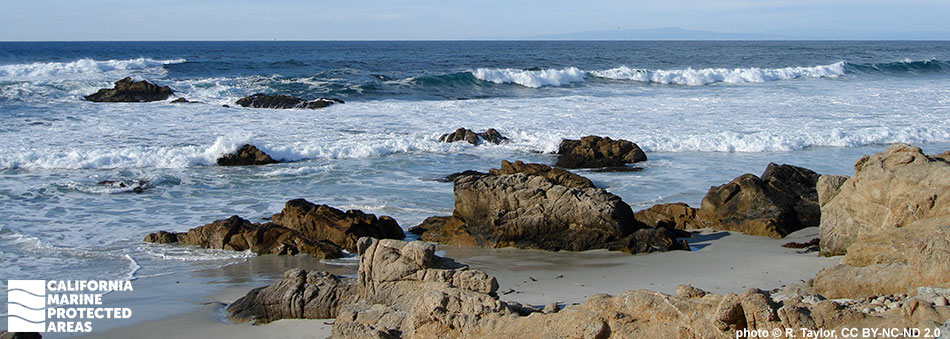
Overview
Carmel Bay State Marine Conservation Area (SMCA) is nestled between Pescadero Point and Point Lobos in Monterey County. This marine protected area (MPA) covers a little more than two square miles of nearshore waters inside Carmel Bay. The marine environment contains rocky reefs, sandy seafloor habitats, lush kelp forests, and large patches of surfgrass.
Carmel Bay SMCA is a hot spot for marine life, with nutrient-rich waters that support rockfish, leopard sharks, bottlenose dolphins, and sea lions. The waters extend from shallow tidepools to a submarine canyon that reaches depths of approximately 470 feet. Common fish species typically found in the kelp forests and rocky crevices include striped seaperch, cabezon, lingcod, and sculpin. Flatfish like starry flounder and sanddabs blend in with the sandy seafloor. Scattered throughout the bay, rocky outcroppings and shallow tidepools shelter strawberry and giant green anemones, sea lemon nudibranchs (sea slugs), decorator crabs, and a suite of other invertebrates.
Sea otters can be seen floating on the ocean surface in the kelp canopy. Gray whales and humpback whales occasionally pass through the bay during their annual migrations. Multiple white sand beaches run along the coastline adjacent to Carmel Bay SMCA. The recreational take of finfish and certain kelp harvesting is allowed in the SMCA, but take of other living marine resources is prohibited.
Regulations
It is unlawful to injure, damage, take, or possess any living, geological, or cultural marine resource, EXCEPT:
Recreational take of finfish is allowed. Commercial take of giant kelp and bull kelp by hand is allowed.
California Code of Regulations Title 14, Section 632(b)(80)(opens in new tab)
Quick Facts
MPA size: 2.20 square miles
Shoreline span: 2.7 miles
Depth range: 0 to 471 feet
Habitat composition*:
- Rock: 1.91 square miles
- Sand/mud: 1.32 square miles
*Habitat calculations are based on three-dimensional area and may exceed the total MPA area listed above.